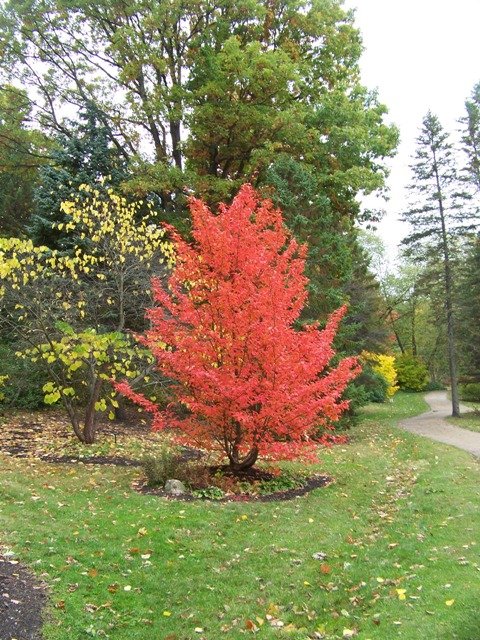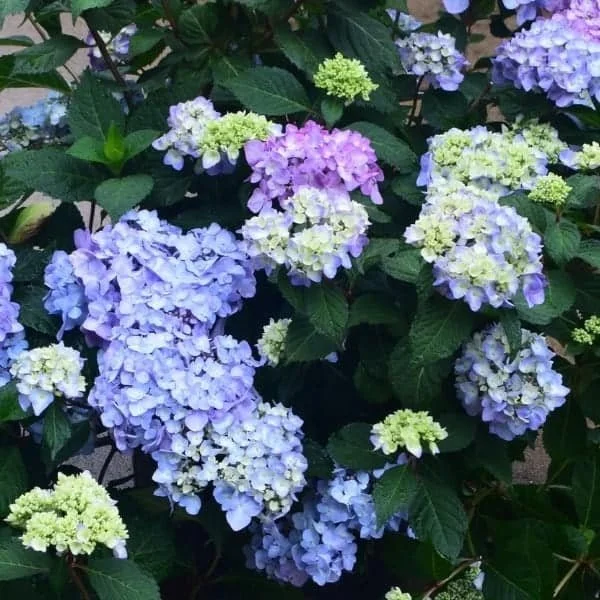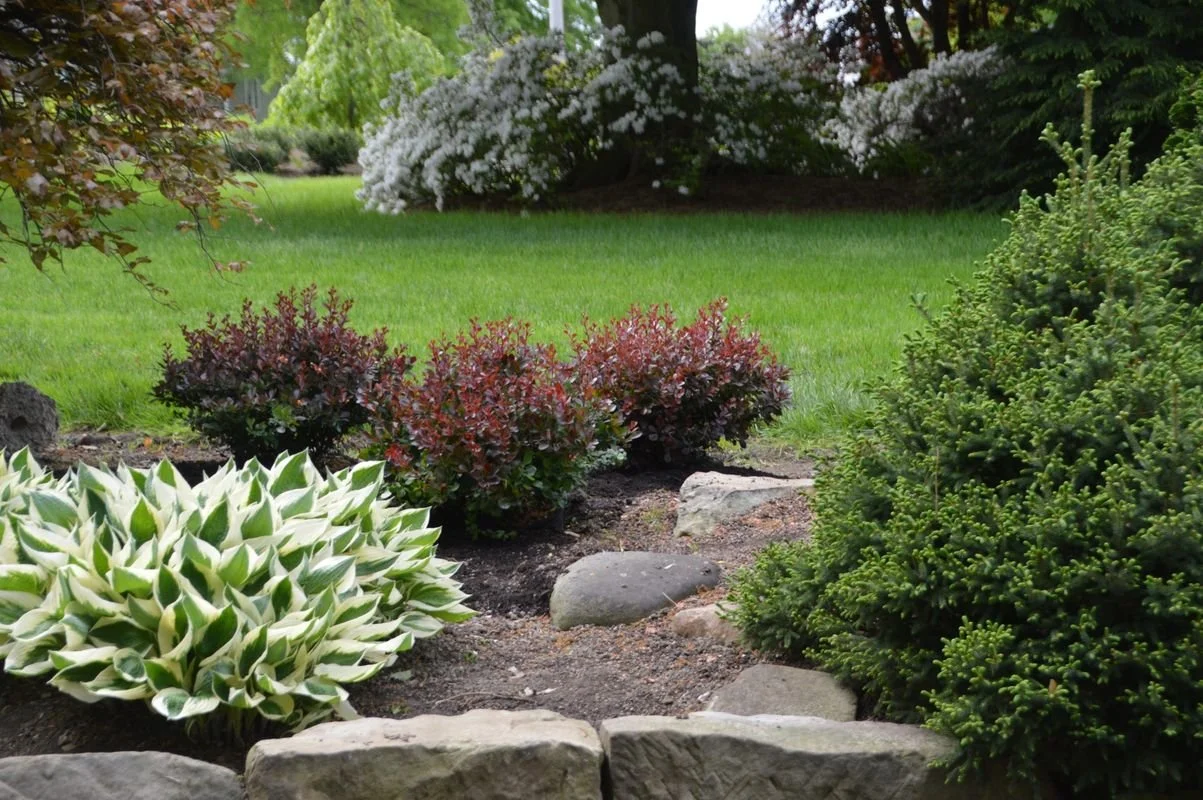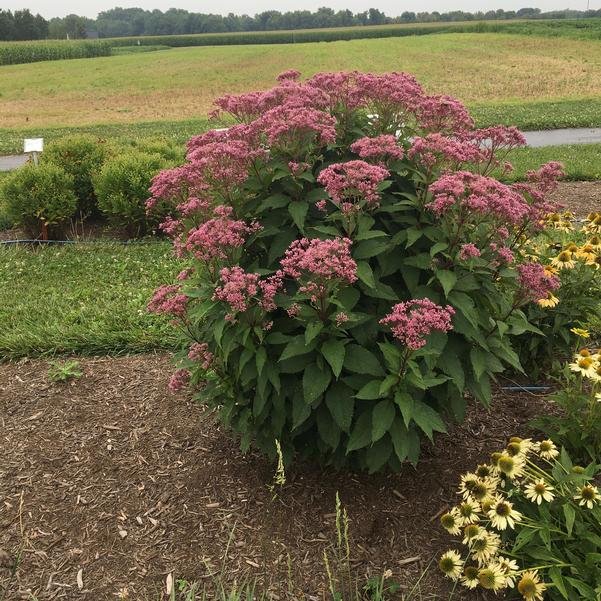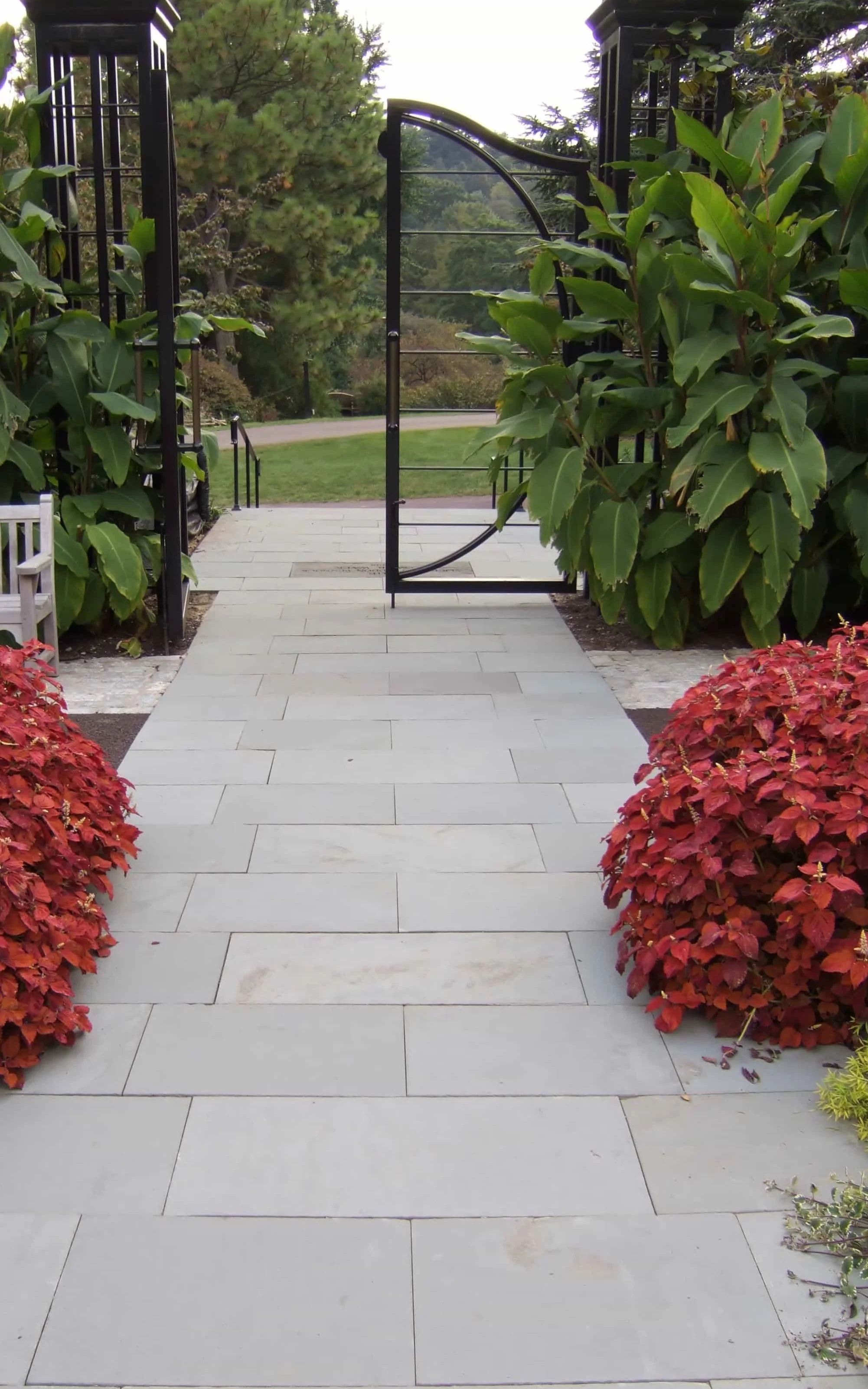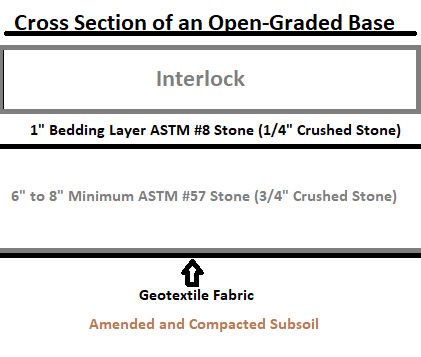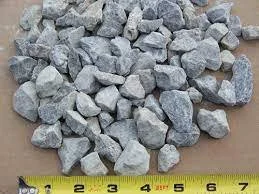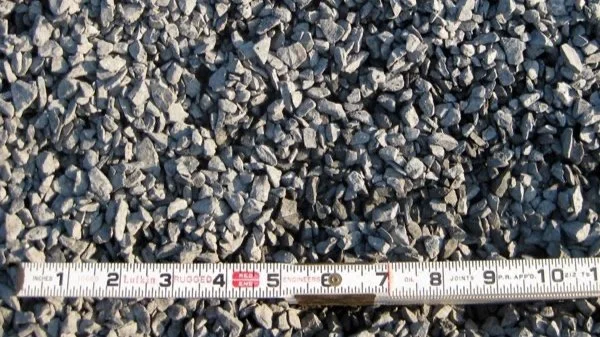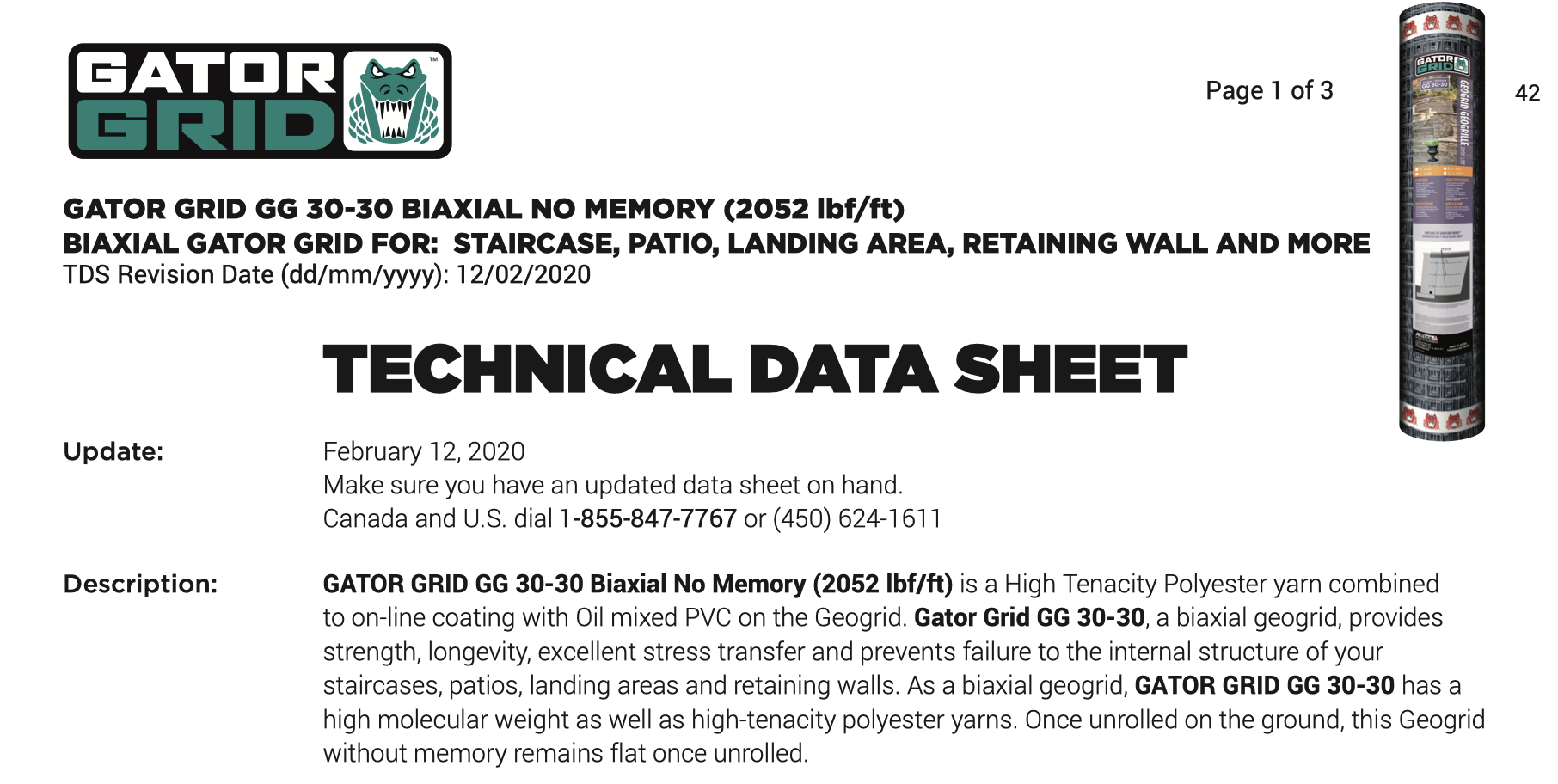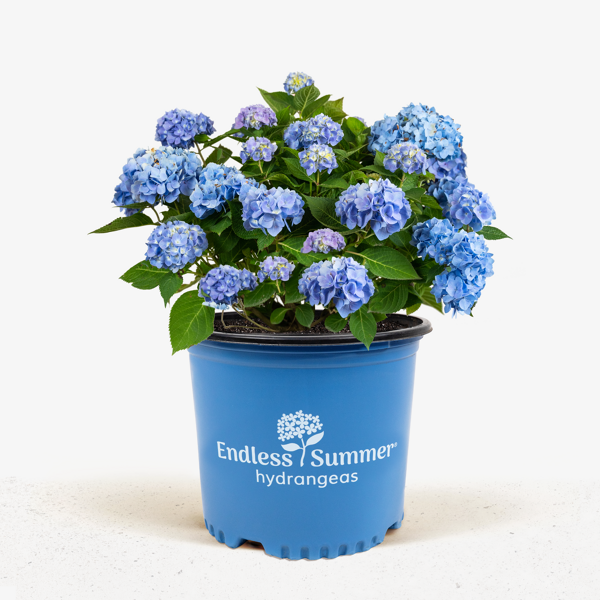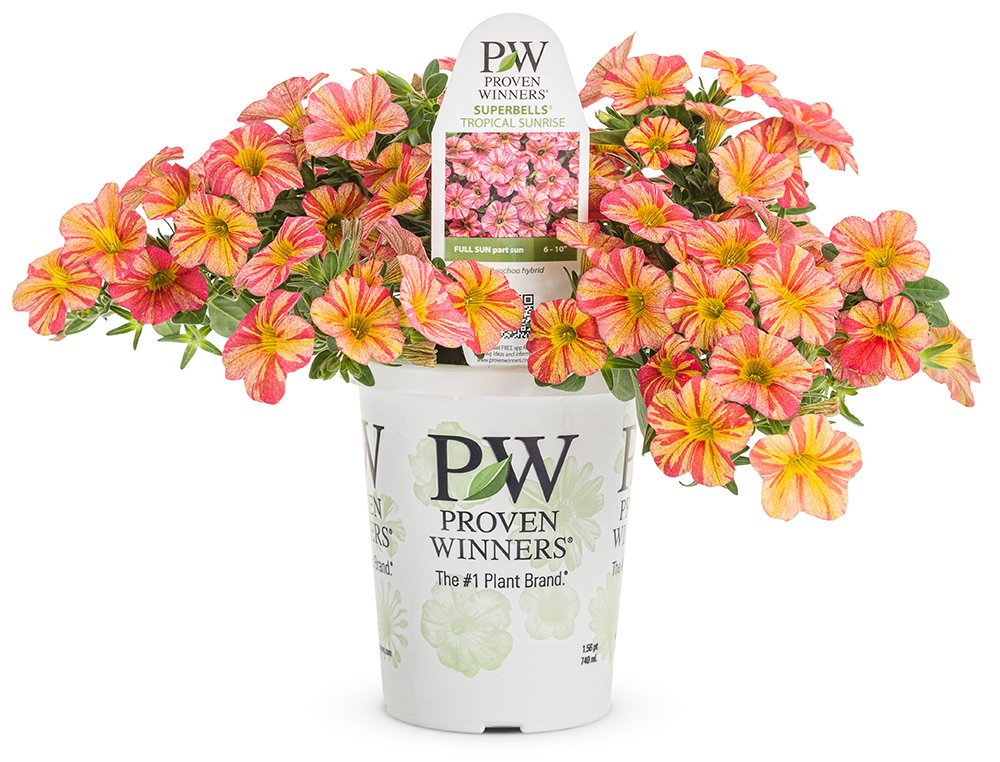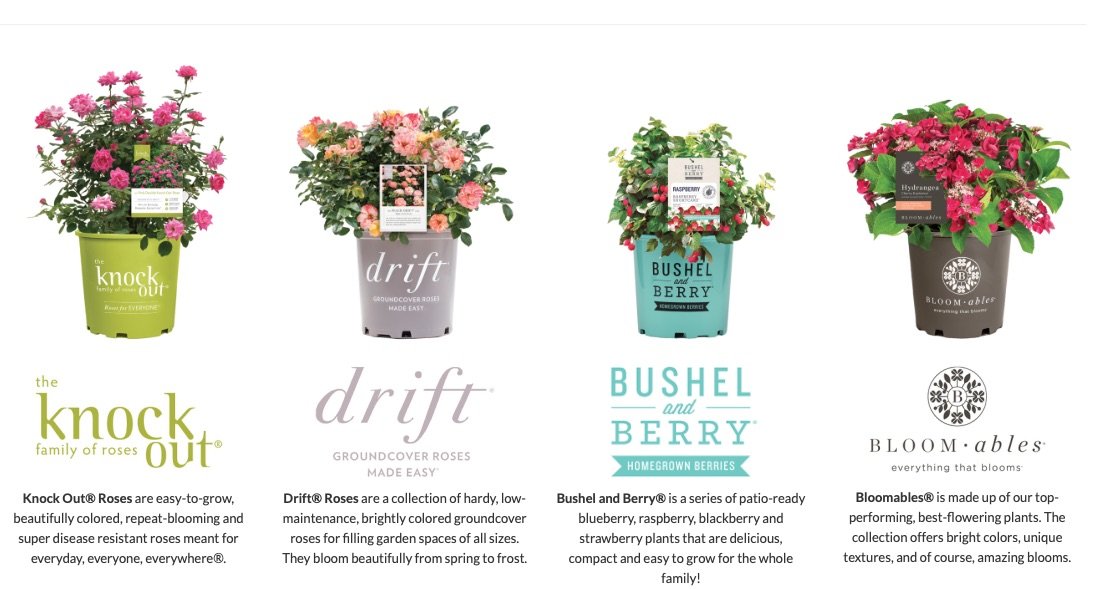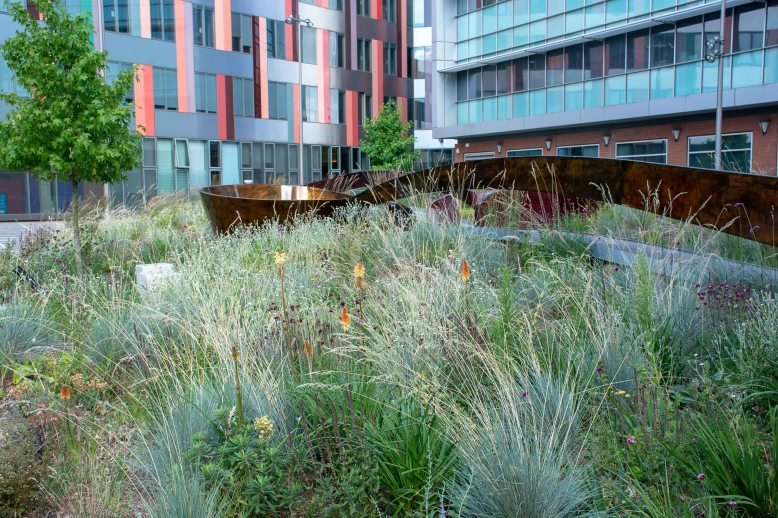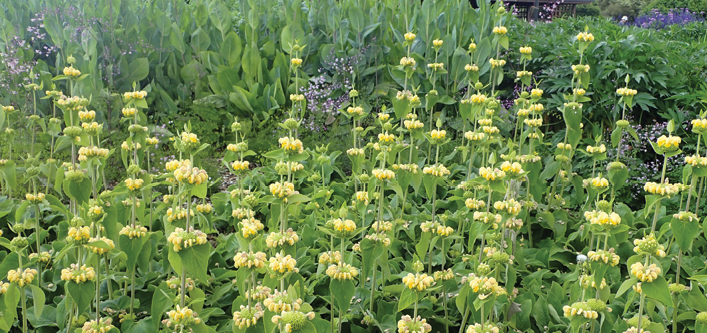Take some time in each day to slow down and be in the moment. Make time for an afternoon cup of tea. And maybe a cookie too. With a friend is even better.
From a recent Roy Diblik YouTube video. The screenshots speak for themselves!
I’m a great fan of Roy Diblik and I love it when he posts a new video. During the season, the videos are of him going out and about, showing plants, looking at gardens old and new and interviewing some of the people he runs into. There have also been a few of presentation made at Northwind by him and by others. All are very interesting and the production values are really quite good while still keeping the down-to-earthness of Roy.
He recently posted a video of a trip he made to visit a garden he had worked on in Virginia, and he did a video tour through parts of the existing (mature) garden in addition to showing what revisions he was going to make.
Roy Diblik’s finger pointing to Amsonia hubrichtii ‘Butterscotch’
Besides my usual awe in looking at the gardens he designs, I was introduced to yet another Amsonia hubrichtii cultivar ‘Butterscotch’. So beautiful! I must find it!
The white-flowering ornamental grass is Muhlenbergia capillaris ‘White Cloud’ (Muhly Grass)
So yet another Zone-pushing ornamental grass to covet - ‘White Cloud’ Muhly Grass - maybe even more beautiful than the more familiar pink-flowering Muhly Grass!
2022 draws to an end
This has been one of the most dramatic seasons for spectacular fall foliage color in recent memory. The perfect confluence of the right amount of rain at the right time and the right soil and air temperatures at the right time, and whatever else goes into the alchemy of the medley of fall colors.
Fall has always been my favorite season, and when I started doing Landscape Design I aimed to have multi-season interest in all the gardens I designed. There’s always a heavy emphasis on fall foliage color. What can be more beautiful when looking out at your landscape than seeing a mosaic of red, orange, gold, butter-yellow, and aubergine leaves?!
Here are some of the ones I admire most:
Amelanchier, Amsonia, Andropogon ‘Red October’, Calycanthus, Chionanthus, Plethora, Cornus mas, Cosinus, Diospyros americana
Fothergilla, Geranium, Hamamelis, Hydrangea quercifolia, Itea Virginia, Lagerstromia, Lindera benzoin, Liquidambar styraciflua ‘Slender Silhouette’, Nyssa sylvatica ‘Wildfire’
Oxydendron, Parrotia, PawPaw (Asimina triloba), Chinese Pistache, Rhus, Rosa rugosa
Sassafras, Schizachyrium scoparium, Stewartia, Vaccimium corymbosium, Viburnum carlessii
A Reblooming Hydrangea macrophylla Selected by Michael Dirr himself
WorryFree® Rock-n-Roll™ Hydrangea
Hydrangea macrophylla 'COF HM3' PP32584
Practically everyone loves big-leaf hydrangeas - its the look of the Hamptons and Nantucket - billowy romantic long-lasting blooms. And the most desirable cultivars are those that rebloom throughout the season. Many of the early re-bloomers were disappointing, because they only produced a small number of flowers the second time around. And a lot of the older varieties of blue hydrangeas bloom only once and grow too large for small spaces and can flop under the weight of their blooms.
Rock-n-Roll Hydrangea can potentially take the worry out of blue hydrangea planting. Selected by Dr. Michael Dirr, this hydrangea is a heavy blooming sport of Endless Summer® Twist-n-Shout®. It carries its bountiful blooms above sturdy stems and lush green foliage. The flowers are a mix of deep pink, purple, and blue and are re-blooming. It is exceedingly hardy and blooms profusely on old and new wood, providing a full season of color from June to October.
• Part shade
• Hardy to Zone 4
• Height 3 - 5 ft
• Spread 3 - 5 ft
Crimson Barberry Is Back!
The burgundy-foliage varieties of Japanese barberry (Berberis thunbergii) had long been a staple of landscape design in places with heavy deer pressure. The dwarf varieties, in particular, were valuable additions to designs, providing both structure and a beautiful deep burgundy-eggplant color. The perfect foil to Hakenochloa 'All Gold' or dwarf blue spruce.
Until it was recognized as an invasive plant in NYS and its propagation and sale were regulated. And we couldn't plant it in good conscience anymore, anyway, because what landscape designer wants to intentionally introduce an invasive into the environment.
So we limped along, using burgundy-leafed Heuchera varieties or dwarf burgundy-leafed forms of Weigela or maybe burgundy-leafed cultivars of sedum as substitutes, realizing that they didn't really serve the same function in the design as crimson barberry had.
Sigh.
But now, there's a NON-INVASIVE BARBERRY!
WorryFree® Crimson Cutie® Barberry
Berberis thunbergii 'UCONNBTCP4N' PP30095
It is a product of a planned breeding program conducted in Storrs, Conn. The new barberry plant originated from Berberis thunbergii ‘Crimson Pygmy’ (synonym Berberis thunbergii ‘Atropurpurea Nana’) through the use of the mitotic inhibitor colchicine to create an autotetraploid form of the plant. No paternal plant is involved in the creation of ‘UCONNBTCP4N’. Berberis thunbergii ‘Crimson Pygmy’ is not patented and has been used in the nursery industry since 1942. The development of this cultivar included Federal funding.
An autotetraploid is an individual or strain whose chromosome complement consists of four copies of a single genome due to doubling of an ancestral chromosome complement - in this case induced by a mitotic inhibitor. In an autotetraploid, with every chromosome represented four times, normal chromosome pairing at meiosis can be difficult, and can lead to reduced fertility (though this is not always the case).
From the Plant Patent information:
Publication Date: Feb 1, 2018
Patent Grant number: PP30095
Inventor: Mark Brand (Farmington, CT)
Unique characteristics of the new Barberry plant:
• dense habit growing to 45-60 cm (18 - 24 in) tall by 90-105 cm (36 - 42 in) wide in 10 years
• purple-red spring and summer foliage
• foliage thick and slightly leathery, held on stout stems
• fall foliage color is purple-red-orange
• small yellow and red flowers held in clusters of 3 to 6 flowers, in late April-early May
• fruit is red, ripening in October
• cold hardy in winter to at least −26° C (-15 F)
• seed production is 0.2% that of standard, diploid Berberis thunbergii ‘Crimson Pygmy’, so it is essentially seed sterile
• tested to be resistant to black stem rust by the USDA Cereal Diseases Laboratory in St. Paul, Minn.
Plants of the new Barberry differ primarily from plants of Berberis thunbergii ‘Crimson Pygmy’ in that Berberis thunbergii ‘UCONNBTCP4N’ is essentially sterile, while same age ‘Crimson Pygmy’ plants produce over 8,000 seeds per plant per year. In addition, Berberis thunbergii ‘UCONNBTCP4N’ grows approximately 10% larger than ‘Crimson Pygmy’ and has stouter stems and thicker, more leathery foliage.
This is how the plant is described on the "Worryfree" website:
Crimson Cutie® represents the first in a series of non-invasive Japanese barberries bred and tested by the University of Connecticut. Living up to its WorryFree® collection name, Crimson Cutie® will not produce nuisance seedlings or spread to unwanted areas. Approved for sale in the states of New York and Pennsylvania. This replacement for Crimson Pygmy is excellent as an accent or foundation plant in addition to low hedge and border uses. Definitely not a favorite of deer!
Yippee - we can use Crimson Barberry again!
Midwest Groundcovers - One of the wholesale nurseries I wish I could shop at!
Midwest Groundcovers Native Garden
I first heard of Midwest Groundcovers a number of years ago from a lecture given by Roy Diblik at NYBG. He mentioned them as a source for native plants and they had a list on their website of native plants that I printed out and carried around in my notebook for a few years. Fast forward to the COVID years, where connections to horticulture, plants, and "normality" was available mainly through webinars and YouTube presentations. Midwest Groundcovers turns out to have a Winter Lecture series that I've watched for the last 2 winters that turns out to be quite interesting.
This is what Midwest Groundcovers says about itself on its website:
Growing & Propagating Over 20 Million of the Finest Wholesale Plants in the Midwest
Although Groundcovers are our specialty, Midwest Groundcovers’ plant offerings include Evergreens and Broadleaves, Deciduous Shrubs, Perennials, Ornamental Grasses, Vines and Native Prairie, Wetland and Woodland species. We are leaders in the Green Industry in partnering with landscape architects, landscape designers, green roof and plant professionals to create inspiring planting combination solutions. Experts in plants for Midwestern durability and sustainability for over five decades.
Unfortunately for me, they don't do mail order and Irvington NY is obviously not in their delivery range. But if I lived near enough, I would buy everything from them.
Their Nursery includes the Midwest Natural Garden that was established in 2011. It was originally a planting by Walter Stephens, called The Natural Garden, founded in 1953. Stevens populated the original garden with a variety of native species that he rescued from being destroyed by a development project. Nearly 60 years later, Midwest Groundcovers purchased the property and has kept the integrity of the local ecotype plants and the original native stock plants and seed beds. In 2016, conservation work and site development began under the consultation of Restoration Ecologist Jens Jensen from Jensen Ecology. Sections of the 29-acre site were graded and a series of step pools installed to reduce erosion and direct stormwater into the pond. A vegetative bioswale and wetland area were added to capture sediment and “clean” the water for irrigation use. A selection of native plugs and prairie seed mix was planted on the pond’s edge for pollinators. In 2017, controlled burns were begun to assist in managing invasives and non-natives. We continue to restore on-site, existing natural areas and develop new ones. Habitats include woodland, prairie, wetland, and a stream restoration.
Midwest Natural Garden is a production nursery site and is not open to the public.
They grow many different species of Carex as well - and have planted a "Carex Classroom" so that people can see what the different Carex species look like. I imagine this is a very valuable resource, since Carex are fairly new to the Trade, there are so many of them, they actually have a wide variety of habits and foliage, some are best suited to specific niches and many of us (me) have no idea what most of them look like except from pictures.
The Carex Classroom is designed to help educate specifiers, ecologists, landscape designers and plant experts on the nuances of the many species available.
Here are some of the plants that Midwest Groundcovers horticulturalists found exciting in 2022.
From Midwest Groundcovers Webinar January 21, 2022 “21 Plants for 2022”
Spigelia marilandica ‘Little Redhead’ (Common Name: Indian Pink)
Spigelia is underutilized in the landscape due to limited availability, but it's poised to make an explosion in popularity. Why? It's a very versatile perennial-it grows naturally in either sun or shade. This perennial can be found growing in the wild in woodlands and along streambanks throughout the Eastern United States. It's wildly popular among wildflower enthusiasts and highly sought after.
'Little Redhead' is a superior selection of the species, vegetatively propagated to ensure uniformity. Dark red tubular flowers with yellow interiors are produced above top of an upright clump of dark green, wedge-shaped leaves. This genus requires good drainage to thrive, so do not plant in areas with standing water. Full sun - part shade; 24-28 in tall X 20-24 in wide. Rabbits eat it.
Tricyrtis formosana ‘Autumn Glow’ (Common Name: Formosa Toad Lily)
Impressive variegation is what sets this toad lily apart from older cultivars. Per Tony Avent, it boasts the widest yellow leaf margins of any variegated Tricyrtis he’s grown.
Orchid-like, reddish purple to blue violet speckled blossoms appear from late summer into early fall in the north, midsummer in the south. It has attractive dark buds and is slow-growing. An excellent perennial for adding late season color to the shade garden.
Dianthus X ‘Paint the Town Fancy’ Series (Common Name: Pinks)
The Paint the Town Series cultivars are prized for their bright colors and increased heat tolerance. Flowers appear in early summer, and a quick shearing after flowering will encourage them to rebloom in early fall. This is the perfect size to edge the front of the sunny border and use in combination containers.
'Paint the Town Fancy' produces 1", single, rosy fuchsia flowers with a red eye and serrated petals. Flowers completely cover the plant when it's in peak. It has glaucous blue foliage that stays clean and tolerates heat very well. Midwest Groundcovers considers this to be an improvement over ‘Firewitch’. It needs good drainage.
Aquilegia EARLYBIRD™ Purple Blue ('PAS1258487') EARLYBIRD™ Series (Common Name: Columbine)
A series of early flowering Columbine from Kieft Seed. There are several cultivars as seen above.. These are compact plants with lots of flowers and strong colors. 9-11 in tall with upward-facing flowers. Will naturalize. They also have excellent potential as cut flowers, lasting up to 2 weeks in a vase.
Allium X ‘Big Beauty’ (Common Name: Ornamental Onion)
‘Big Beauty’ has lovely wide gray-green foliage that is very showy - bolder than other alliums when it comes up in spring. Large soft pink flowers bloom July - Sep and are 2.5 in diameter. This is a really nice foliage plant as well as a beautiful flowering plant. Takes heat and drought and performs over a long period. Seed heads hold up well to snow and ice. 18 - 24 in tall
Cotinus coggygria ‘Winecraft Gold’ (Common Name: Smokebush)
Leaves emerge orange, turn golden yellow and then mature to chartreuse. It flowers with pink “smoke” plumes. It has a dense oval shape; good branching structure; much more “regular” habit than many other smokebush varieties. Not very susceptible to leaf burn. Beautiful fall color with tones of orange/yellow.
Helleborus X Frost Kiss ‘Molly’s White’ (Common Name: Lenten Rose)
This is a great performer in the landscape. It has silvery-green mottled foliage and a huge number of clear white flowers that are fairly upward-facing. It will bloom in the first year and will fill out quickly. Compact habit; 12-18 in tall.
Hydrangea paniculata grandiflora ‘Firelight Tidbit’ (Common Name: PG Hydrangea)
A dwarf form of ‘Firelight’. It’s shorter than ‘Bobo’ at 2-3 ft tall. Flowers turn a deep righ red color in fall. Gets a fantastic purpley-orange fall foliage color.
Some more new perennials that I'd like to try, and why
I said I gave up on writing about new plants, but that proves to have been an emotional outburst. There are always new plants, and its a good idea to look through the lists and the marketing materials and see if there are some that could really work for my design practice. Below are a few more perennials that are new for 2022 - or at least newly on my radar - including information from their Plant Patent for some of them.
Amsonia hybrid ‘String Theory’ Patent number: PP34419
Date of Patent: July 12, 2022
Assignee: Walters Gardens, Inc.
Inventor: Hans A Hansen
From the Plant Patent:
A new and distinct Amsonia plant named ‘String Theory’ is characterized by winter-hardy, compact, densely-stemmed, clean habit with linear, dark-green foliage that goes dormant in the winter; single, light periwinkle-blue, star-shaped flowers on medium height scapes flowering above the foliage beginning about early-May and effective for about four weeks. T
The most similar Blue Star cultivars known to the inventor are: ‘Blue Ice’ (not patented), ‘Starstruck’ U.S. Plant Pat. No. 32,246 and ‘Storm Cloud’ (not patented).
Amsonia hubrichtii, commonly called “bluestar,” is a native perennial with blue spring flowers and showy fine-textured foliage that turns gold in fall. The main criticism is that some people think it gets a little tall and floppy with its three-foot height. ‘String Theory, is a compact version that knocks a foot off of this plant’s usual height.
“It’s more compact than the species, plus the leaves don’t turn chlorotic (yellowish) in summer,” says Chris Ruger, a grower for the wholesale Quality Greenhouses near Dillsburg who picks ‘String Theory’ as his favorite new perennial of 2022. The variety blooms a little later in spring than the species but still retains the periwinkle-blue flower color as well as the brilliant golden fall-foliage color.
Plants grow just under two feet tall, ideally in full sun. Amsonia is also heat tolerant and not a favorite of deer.
Pennisetum alopecuroides Worryfree Hush Puppy - a non-invasive Fountain grass
Pennisetum alopecuroides 'Tift PA5' PP31,027
Bred at the University of Georgia
From the Plant Patent:
Open pollinated seeds from ‘Tift PS989’ plants were irradiated with 10 K of Cobalt 60 gamma radiation to produce a first group of irradiated seeds. These seeds were planted in a field to produce 256 plants. These plants were evaluated and six were selected based on morphologically desirable genotypes with reduced seed set. Open pollinated seeds (a second group of seeds) from these six selected plants was harvested and irradiated with 10 Kr of Cobalt 60. Irradiated seeds from only one of the six selected plants survived the second radiation and were planted in a field to produce 64 plants. Irradiation of seeds usually results in chimeras or sectors on the plants for the trait of interest. Therefore, each of the sixty four plant was divided into four quadrants or sectors (a, b, c, and d) and five or more inflorescences from each quadrant were examined for seed sterility. A highly seed sterile sector a of plant number 60 was selected and asexually propagated to produce ‘Tift PA5’. ‘Tift PA5’ has been tested at Tifton, Ga.
Lower Paxton Twp. PA horticulturist David Wilson, marketing director for Overdevest Nurseries’ Garden Splendor line of plants, picked Worryfree Hush Puppy fountain grass as one of his two favorite new perennials of 2022. He likes it for two reasons : 1.) it’s sterile (meaning no unwanted seeding around), and 2.) it has unusually long-lasting flowering spikes
Wilson adds that Hush Puppy has a “nice, full, and vigorous free-flowering habit with inflorescences that last much longer than conventional varieties like ‘Hameln.’ In our trials, we’ve witnessed displays that last at least four weeks longer than other varieties.”
Hush Puppy™ Fountain Grass features long-lasting pink plumes that spray high over rounded mounds of slender foliage. Plants grow three feet tall and four feet wide, ideally in full sun. Drought-tough and deer-resistant. Hardiness Zones: 5-9
Eupatorium purpureum 'FLOREUPRE1' Euphoria™ RubyPPAF (syn. Eutrochium purpureum 'FLOREUPRE1')
Joe Pye Weed
There are lots of varieties of Joe Pye weed now - it's hard to keep them straight sometimes. Joe Pye Weed can get a bit big for a lot of gardens, topping out at six feet or more. Even recent “dwarf” varieties often grow four feet tall and wide. But its a very valuable native plant that pollinaotrs of all kinds flock to. So having a cultivar that is even smaller than 'Little Joe' is a great addition to the landscape designer's arsenal. Plus its name is a cute and clever play on the word "Eupatorium".
'Euphoria Ruby' grows just over three feet tall, doesn’t flop, and is a heavy bloomer with magenta umbrella-shaped clusters. Bees and butterflies love it. ‘Euphoria Ruby’ will grow in both damp or dry soil, ideally in full sun.
The new cultivar originated in a controlled breeding program in Quedlinburg, Germany in 2011. The objective of the breeding program was the development of Eutrochium cultivars having a compact growth habit.
From the Plant Patent:
The new Eutrochium cultivar is the result of open-pollination. The female (seed) parent of the new cultivar is the proprietary Eutrochium purpureum breeding selection coded 4846-1, not patented, characterized by its medium cream-rose colored ray florets, dark green-colored foliage, and vigorous, upright growth habit. The male (pollen) parent of the new cultivar is unknown. The new cultivar was discovered and selected as a single flowering plant within the progeny of the above stated open-pollination in a controlled environment in Quedlinburg, Germany.
The following characteristics of the new cultivar have been repeatedly observed and can be used to distinguish ‘FLOREUPRE1’ as a new and distinct cultivar of Eutrochium plant:
1. Medium red-purple colored inflorescences
2. Medium green-colored foliage
3. Low growth vigor
4. Compact-upright growth habit
Plants of the new cultivar differ from plants of the female parent primarily in having a different ray floret color, lower growth vigor, and a more compact growth habit.
Of the many commercially available Eutrochium cultivars, the most similar in comparison to the new cultivar is ‘Little Joe’, U.S. Plant Pat. No. 16,122. However, in side-by-side comparisons, plants of the new cultivar differ from plants of ‘Little Joe’ in at least the following characteristics:
1. Plants of the new cultivar are shorter than plants of ‘Little Joe’
2. Plants of the new cultivar have a darker purple-colored flowers than plants of ‘Little Joe’
3. Plants of the new cultivar have larger leaves than plants of ‘Little Joe’
Anemone ‘Spring Beauty’
Anemone hybrid 'Spring Beauty Pink'
Spring Beauty Pink comes from the Netherlands and is a hybrid of Anemone sylvestris, with bubblegum pink flowers first appearing in late spring and contining throughout summer. Delicate looking, but extremely tough, its perfectly pink flowers flutter in the wind attracting all the early pollinators with its nectar. Attractive molunded foliage.
It grows 12″ tall and 15″ wide, making it compact enough for smaller gardens, and for the front of the border. Its ideal condition is dappled shade protected from the afternoon sun, yet it will also grow in full shade. It looks beautiful in woodland settings and mixed with other perennials in cottage, cutting, and pollinator gardens. It spreads by underground rhizomes and can be used as a ground cover. New plants may grow near the original plant and can be easily transplanted elsewhere.
Angela Treadwell-Palmer, founder and co-owner of Alabama-based Plants Nouveau plant introduction company, picks this as her favorite new 2022 perennial because it’s the first deep-pink, spring-blooming anemone. Treadwell-Palmer says plants might look delicate, but they’re actually “supersturdy” and seldom bothered by any bug or disease issues. And she notes that early pollinators appreciate the spring blooms.
Nepeta grandiflora 'Summer Magic' PP27090 (Catmint)
This cultivar is not new by any means, having been on RHS Chelsea Flower show’s Short List in 2013. But its new to the US trade and is an introduction by Plants Nouveau. Their founder, Treadwell-Palmer, likes this new catmint variety because of its exceptionally long bloom time – running non-stop from May until September most years. “It blooms and blooms all summer,” she says. “The upright, deep-lavender blooms are held high above the grass-green foliage and never flop, even in the worst of storms. We admire its ability to ‘keep it fresh’ even in the heat and humidity of summer as other Nepeta varieties tend to fade.” Plants grow 15 to 18 inches tall and do best in full sun.
From the Plant Patent:
The new cultivar is a product of chance discovery by the inventor. This new variety, hereinafter referred to as ‘SUMMER MAGIC’, was discovered as a chance seedling by the inventor, Malcolm Spencer. The seed parent is believed to be Nepeta grandiflora ‘Bramdean’, unpatented, and the pollen parent undetermined. This interesting new variety was discovered in the inventor's garden during June 2010 as an individual seedling plant. The plant was discovered in West Sussex, England.
The following traits have been repeatedly observed and are determined to be the unique characteristics of ‘SUMMER MAGIC’
• 1. Compact bushy habit
2. Improved branch structure on flower stems
3. Improved plant sturdiness; better resistance to wind/rain damage
4. Distinctive strong flower color
5. Large quantity of flowers
COMPARISON TO PARENT VARIETY
‘SUMMER MAGIC’ is similar in most horticultural characteristics to the presumed seed parent variety Nepeta grandiflora ‘Bramdean’. Plants of the new cultivar ‘SUMMER MAGIC’ however, differ in the following:
1. The new variety is shorter
2. The new variety produces more branches.
3. The new variety has improved resistance to weather damage—parent variety is often broken open by summer storms.
‘SUMMER MAGIC’ can be compared to the well known commercial variety Nepeta faassenii ‘Six Hills Giant’, unpatented. Plants of the new cultivar ‘SUMMER MAGIC’ are similar to plants of ‘Six Hills Giant’ in most horticultural characteristics. Plants of the new cultivar ‘SUMMER MAGIC’ however, differ in the following characteristics:
1. The new variety is much shorter
2. The new variety has significantly improved branching on flower stems
3. The new variety has improved resistance to weather damage
4. Pinching requirements and or/growth regulator use are reduced
‘SUMMER MAGIC’ can be compared to the known commercial variety Nepeta racemosa ‘Little Titch’, unpatented. Plants of the new cultivar ‘SUMMER MAGIC’ are similar to plants of ‘Little Titch’ in most horticultural characteristics. Plants of the new cultivar ‘SUMMER MAGIC’ however, differ in the following characteristics:
1. The new variety produces longer flower spikes.
2. The new variety produces more flowers per stem, and more flowering stems per plant.
3. The new variety has improved resistance to weather damage
4. The new variety produces more branches per plant.
‘SUMMER MAGIC’ can be compared to the known commercial variety Nepeta racemosa ‘Little Titch’, unpatented. Plants of the new cultivar ‘SUMMER MAGIC’ are similar to plants of ‘Little Titch’ in most horticultural characteristics. Plants of the new cultivar ‘SUMMER MAGIC’ however, differ in the following characteristics:
1. The new variety produces longer flower spikes.
2. The new variety produces more flowers per stem, and more flowering stems per plant.
3. The new variety has improved resistance to weather damage
4. The new variety produces more branches per plant.‘SUMMER MAGIC’ can be compared to the known commercial variety Nepeta racemosa ‘Little Titch’, unpatented. Plants of the new cultivar ‘SUMMER MAGIC’ are similar to plants of ‘Little Titch’ in most horticultural characteristics. Plants of the new cultivar ‘SUMMER MAGIC’ however, differ in the following characteristics:
1. The new variety produces longer flower spikes.
2. The new variety produces more flowers per stem, and more flowering stems per plant.
3. The new variety has improved resistance to weather damage
4. The new variety produces more branches per plant.
‘SUMMER MAGIC’ can be compared to the known commercial variety Nepeta racemosa ‘Little Titch’, unpatented. Plants of the new cultivar ‘SUMMER MAGIC’ are similar to plants of ‘Little Titch’ in most horticultural characteristics. Plants of the new cultivar ‘SUMMER MAGIC’ however, differ in the following characteristics:
1. The new variety produces longer flower spikes.
2. The new variety produces more flowers per stem, and more flowering stems per plant.
3. The new variety has improved resistance to weather damage
4. The new variety produces more branches per plant.
Open Graded Base: How to make your new hardscape installation better, more permeable and more robust to freeze-thaw events
Probably the last thing you think about when entering into a hardscaping project as a homeowner is the base installed underneath the stones or pavers. And why should you - you're not a mason. Leave it to the professionals.
That sounds good in theory, but, like everything, the "science" of hardscape bases has evolved over time. Materials that masons had available to use a generation ago have changed. The amount of precipitation we receive as rain rather than snow during the winter has changed. The dawn of the "Unilock Paver Age" has come and concrete pavers are now used quite widely in the industry. Note that they are properly called Concrete Modular Units or interlocking concrete pavers There are a lot of different interlocking concrete paver manufacturers besides Unilock out there now, with varying degrees of product quality and different styles.
The make-or-break principle behind every hardscaping project, whether CMUs, natural stone or porcelain pavers, is to create a stable base. Without that the stones or pavers can shift with time, undergo frost heave, or crack. The hardscape can't stay properly pitched to shed surface water flow if it shifts, and puddles can form that degrade the hardscape as well as presenting safety hazards. There are now standards for what is required in different climates and for different soil types - those standards are specified in construction documents and are supposed to be followed by the contractor. I think its still important for homeowners to have a basic understanding of materials and techniques involved.
The information below refers to the base used for interlocking concrete pavers but the same principles apply to natural stone. Porcelain pavers have their own set of specialized requirements so what's written here doesn't apply to porcelain. (The choice of hardscape material to use for any given project is a topic for another day.)
For many years, experts have recommended the use a compacted base conforming to ASTM D 2940. The terminology for this product — a mix of fines and angular stone up to +/- ¾ inches in size — varies across regions and ranges from “Item 4’”to “Crusher Run”. But as permeable pavers became more available and widely used, the industry had to come up with a different base material, because fines can't be present in permeable paver installations. Fines clog up the spaces between the gravel under permeable pavers, which is meant to be a reservoir to hold stormwater to let it percolate over time into the underlying soil. Base material without fines is known as “clean gravel”, the basis of the terminology open-graded - because the spaces between gravel are open rather than filled with fines.
Continued experience and further research has shown that the use of open-graded base materials is applicable to more than just true permeable paver installations. In fact, most manufacturers now recommend using open-graded bases for all types of concrete pavers, and a number of “how-to” and “why” videos are available on line.
The open-graded base is installed using two different types of aggregates:
1. ASTM #57
This is ¾ inch open-graded crushed rock with no fines that is used for a recommended minimum of 6 to 8 inches after installing a geotextile fabric to separate the subsoil from your base. It has a high compaction rate, so more can be laid in lifts before compaction.
2. ASTM #8
This is a ⅜ inch or sometimes found as ¼ inch open-graded crushed rock with no fines that is used up to 1 inch deep as the final bedding layer for leveling (a substitute for the more traditionally-used concrete sand). It has a near 99% compaction rate and is incredibly easy to work with as a leveling stone.
Both of these stones should be angular crushed. Be sure to verify this with your supplier before ordering as this is crucial to the compaction of your base material - stone without edges does not compact well!
Spec diagram for an open-graded base used with regular interlocking concrete pavers. If the installation was for permeable pavers, there would be an additional reservoir at least 12 inches deep of larger diameter clean stone functioning as a reservoir to allow stormwater to percolate over time.
ASTM #57
ASTM #8
It's time to say goodbye to fines and use clean stone for all hardscaping projects.
Why?
An Item 4-type base with fines does not provide the best combination of the two most important aspects of the paver base: proper drainage and the load-bearing capacity necessary for appropriate traffic. Using a ¾ inch clean gravel layer and an angular chip stone bedding layer yields much better drainage performance, as well as providing equally sufficient load-bearing capacity to the Item 4-based method.
Other benefits include:
• The bedding can (carefully) be walked on without creating substantial footprints
• It can be used for all product sizes
• It is ideal for raised patios and steps because this system eliminates sand washout
• It is more difficult for weeds to root and thrive in cleaN stone
• There is no room for insects to nest under the pavers
• The materials are workable in essentially any climate, as well as inclement weather
Additional advantages
An Item #4 and sand setting base holds water and creates imperfections in the base. An open-graded base, on the other hand, is free draining, therefore any water that does permeate through won’t sit just below the surface in a water-logged Item #4 base. That, in turn, prevents expansion/contraction as part of the freeze/thaw cycle that could otherwise shift pavers or stones. Open-graded is much more appropriate for Northeastern weather conditions.
The clean stone in an open-graded base actually makes compaction much easier. Achieving the proper compaction requires much less time using compacting equipment. (I’m not sure I fully understand why this is yet, but I’ll read more.) Using an angular chip stone bedding layer, as opposed to sand, can eliminate residual settlement due to improper compaction.
One important aspect of the open-graded base system that cannot be overlooked is the geotextile fabric.
Fabric is completely necessary in any open-graded base installation to prevent the spaces between the clean aggregates from getting clogged with soil migrating up from underneath. Separating the underlying soil from the base is crucial.
Make sure that the fabric extends up the sides of your installation and wraps up and onto the top 6 inches that extends past the edge of your interlock installation where the edge restraint will be installed. This prevents any organic material from the top and sides to filter down into your project.
This is an example of the type of geo grid fabric that is used with open-base hardscape installation.
A commonly-asked question is about migration of the ASTM #8 stone into the voids of the underlying ASTM #57 stone. This does not occur, as the voids in ASTM#57 are not as large as 3/8″ or 1/4″ chips that are being laid on top of it.
For Contractors: Using an open-graded base will save you time and money, and as a hardscaper that is all you ever want.
• EASE OF INSTALLATION
With such a high compaction rate of the two open-graded aggregates, installation of the base and leveling layer are easier. You can lay more in your lifts before compaction, which in a patio or walkway will save you one or two lifts depending on how deep you install your base.
• WORKABLE IN ANY WEATHER CONDITION
If it rains and you are installing a traditional base, you may be out of luck. Your fines will wash out or your project will become a mess quickly. With the open-graded aggregates, you can work in any weather condition. Yes, you can work in the rain without fear that your bedding layer will wash away or become a mess.
• WASHOUT
In a traditional base project with fines and sand as a bedding layer, there is a certain amount of washout that occurs and is inevitable. Especially in raised patio installations, there will definitely be washout occurring through the retaining wall of your raised patio that can lead to sinking. Open-graded aggregates are too large to wash out.
• INSECTS AND WEEDS
Insects love the fines in a traditional base installation. However, in an open-graded base system they are less likely to be burrowing through it as the stones are too large for them. In addition, weeds are less likely to establish roots in these aggregates and are much easier to pull out if they do.
• FEWER CALLBACKS
With all of these advantages over a traditional base, you will have fewer callbacks. That means fewer headaches, less wasted time, and happier customers.
Doug Tallamy's Homegrown National Park Idea
I think Doug Tallamy has the right message for us, and I need to write again about his idea of the Homegrown National Park. First of all, its pretty good marketing, because it catches your attention and is easy to remember. The only thing I slightly quibble with is the use of the word "Homegrown" because I think to many that has the connotation of growing vegetables. But what Tallamy is advocating is not a Victory Garden - although it would be a victory for the climate if it were to be adopted widely across the US.
From the Homegrown National Park website
Chances are, you have never thought of your garden - - indeed, of all of the space on your property - - as a wildlife preserve that represents the last opportunity we have for sustaining plants and animals that were once common throughout the U.S. But that is exactly the role that built landscapes are now playing and will play even more in the near future. If this is news to you, it’s not your fault. We were taught from childhood that plants are decorations and our landscapes are for beauty; they are an outlet for expressing our artistic talents and an oasis for having fun and relaxing in. And, whether we like it or not, the way we landscape our properties is taken by our neighbors as a statement of our wealth, our social status, and our willingness to follow cultural norms.
This is idea #1: even though our landscapes are there for beauty, expressing our artistic talents and an oasis for fun and relaxation, they need to be more than that at this point in hiustory. Your landscape has to play a more important role than just being a statement of wealth or social status.
But no one has taught us that we have forced the plants and animals that evolved in North America (our nation’s biodiversity) to depend more and more on human-dominated landscapes for their continued existence. We have always thought that biodiversity was happy somewhere “out there, in nature,” in our local woodlot or perhaps our state and national parks. We have heard little about the rate at which species are disappearing from our neighborhoods, towns, counties, and states. Even worse, we have never been taught how vital biodiversity is for our own well-being.
This is idea #2: Biodiversity is critically important. Learn what it means!
The population of the U.S., now over 330 million people, has more than doubled since most of us were kids, and it continues to grow by 4,800 people each day. All of those additional souls, together with cheap gas, our love affair with the car, and our quest to own ever larger homes, have fueled unprecedented development that continues to sprawl over 2 million additional acres per year (the size of Yellowstone National Park). ... We have connected all of our developments with 4 million miles of roads, and their combined paved surface is nearly five times the size of New Jersey. Somewhere along the way we decided to convert most of our living and working spaces into huge expanses of lawn. So far, we have planted over 62,500 square miles -some 40 million acres - in lawn. Each weekend we mow an area the size of New England to within one inch and then congratulate ourselves on a job well done. And it’s not as though those little woodlots and “open spaces” we have not paved or manicured are pristine. Nearly all are second-growth forests that have been overtaken by invasive Asian plants like autumn olive, multiflora rose, Oriental bittersweet, porcelainberry, buckthorn, privet, and bush honeysuckle.
This is Idea #3: Re-think the lawn.
... We have turned 54% of the lower 48 states into a matrix of cities, suburbs, roads, airports, power and pipelines, shopping centers, golf courses, infrastructure, and isolated habitat fragments, with 41% more of the U.S. into various forms of agriculture. That’s right: we humans have taken 95% of the natural world and made it unnatural. But does this matter? Are there consequences to using almost all of our land to meet human needs without considering the needs of other species? Absolutely, both for biodiversity and for us. Our fellow creatures need food and shelter to survive and reproduce, and we need robust populations of our fellow creatures because they are what run the ecosystems on which we all depend.
Why We Need Biodiversity
... Biodiversity losses are a clear sign that our own life-support systems are failing. The ecosystems that determine the earth’s ability to support us are run by the plants and animals around us. It is plants that generate oxygen and clean water, that create topsoil out of rock, and that buffer extreme weather events like droughts and floods. It is insect decomposers that drive the nutrient cycles on earth, allowing each new generation of plants and animals to exist. It is pollinators that are essential to the continued existence of 80 % of all plants and 90% of all flowering plants, and it is birds and mammals that disperse the seeds of those plants and provide them with pest control services.
This is Idea #4: Ecosystems fail without enough biodiversity.
Here is the solution proposed by Tallamy - this is Nature's Best Hope. Move your landscape toward four ecological functions:
• support a diverse and complex food web
• manage local watersheds
• move carbon from the atmosphere to the soil
• provide food and housing for as many species of native bees as possible.
Lawn does none of these things well, so reducing the area we have in turf grass is a logical first step. But plants vary a great deal in how well they achieve ecological goals, so we must choose very carefully the plants we use to replace lawn.
This is an image from Benjamin Vogt (Monarch Gardens) showing his front yard prairie garden makeover with a view of the rest of the traditional front lawns in the subdivision. He has a new book coming January 2023 called “Prairie Up”.
OK - I've given up on writing about new plants for 2022. Instead, here are a few new plants that I've seen pictures of and hope to find and try out this season
First up is a new series of anenome called Satin Doll, which begins with one color, Blush. New breeding is focused on a fall anemone line that does not spread. Satin Doll is a clumper, not a runner, and trials show it blooms from July through the end of October. Available from tissue culture, plants can have up to 65 flowers the first year.
Anemone Satin Doll series ‘Blush’
Pop Star Hydrangea
New hydrangea cultivars are generally hybrids of one form or another with H. serrata.
Pop Star is the latest introduction from the Endless Summer lineup from Bailey.
It offers multiple positive traits; according to the descriptions it's compact (about 3 ft. rounded), it seriously reblooms the entire growing season starting about four to six weeks after the growing season initiates (or a tip pruning is performed), it’s Zone 4 (to 9) hardy, it doesn’t lodge due to stiff stems and short internodes, and it’s got great leaf spot tolerance. It’s also said to root very well, and grow out quickly and uniformly.
A new introduction in the “endless Summer’ series - Pop Star
Thuja Junior Giant
This cultivar serves an excellent purpose as a Zone 4 to 8/9. It originated as a branch sport from Thuja X ‘Green Gian’ way back in 2004 at Hermitage Farms Nursery in Virginia.
After nearly 15 years of trials, it was patented in 2018. Like thuja of any kind it doesn’t really tolerate drought well. But it seems like a solid choice for a screening conifer in smaller landscapes.
The “Junior” part – it's about 40% to 50% the size of Thuja Green Giant (which puts it at a mature size of 20- to 25-ft. tall and 10-ft. wide). Another difference is that the branches seem to be held more horizontally, giving it a more open appearance.
Thuja ‘Junior Giant’
‘Feathered Friends’ Ajuga
Anyone who knows an Ann-designed garden knows of my love for ajuga. I think its one of the best ground covers there is, it spreads easily, no critters eat it and when you have a mass-planting of ajuga it looks like an ocean when it blooms. Also, Ann-designed gardens often feature a “mosaic of ground covers”. One of the goals of that mosaic is to have different types and colors of foliage so that it looks interesting in all seasons. When I saw a picture of one of the new introductions ‘Fancy Finch’ I immediately swooned! Everything I love in one package! It has tri-colored foliage - an assortment of gold, orange, and burgundy, creating a colorful display that lasts year-round.
‘Feather Friends’ is a family of ajuga cultivars from Garden Solutions introduced in 2021. This is ‘Fancy Finch’ - really gorgeous.
‘Feathered Friends’ ajuga series.
‘Cordial Canary’
‘Fierce Falcon’
‘Noble Nightingale’
‘Petite Parakeet’
Of course, I immediately tried to find these plants in the trade. I managed to get some ‘Fancy Finch’ via mail order - the plants looked just as great as I had hoped. Important to see what it looks like after being planted and after going through a winter.
Plant Patents
Plant patents are getting to be ubiquitous. They’re meant to protect the time and effort put into breeding new plants, but are there unintended consequences?
Plant patents are granted to those who discover or invent a new and distinct cultivar and asexually reproduce it. Plant patents allow the patent holder to prevent others from asexually reproducing the new plant without first entering into a licensing agreement. Plant patents last for 20 years. Patent lifespan is particularly relevant for trees, given that they may not gain market share as quickly as shrubs, which develop their highly marketable characteristics in a shorter period of time than trees, and those desirable attributes are often visible at the point of sale.
Some of the requirements for receiving a plant patent:
The plant can be produced asexually.
The plant was invented or discovered, and if discovered, it was in a cultivated area (not the wild)
The part of the plant used for asexual reproduction is not a tuber food part (e.g., potato, Jerusalem artichoke).
The person, company or nonprofit entity filing the patent invented or discovered the plant and asexually reproduced it.
The plant has not been patented, in public use or for sale, or otherwise available to the public more than one year prior to the effective filing date.
The plant is novel and has at least one inherent, distinguishing characteristic (i.e., beyond that which is induced by varying environmental conditions).
The entirety of the plant is protected, but not the reproductive subparts of the plant (i.e., seeds, flowers and fruit are not protected by plant patents) such that patented plants can be used by other plant breeders to produce new hybrids.
The key: Asexual reproduction.
A plant can be patented only if can be reproduced asexually. Asexual reproduction produces plants that are genetically identical to the parent plant because no mixing of male and female gametes takes place. The patent then prohibits any further asexual reproduction of the plant without a license.
Asexual reproduction can take place by natural or artificial (assisted by humans) means. Natural asexual reproduction takes place without seeds or spores - for example by means of stolons or rhizomes. That’s fine for letting them spread through your garden, but isn’t very practical for larger scale propagation.
Asexual reproduction methods:
Grafting produces plants by combining favorable stem characteristics with favorable root characteristics. The stem of the plant to be grafted is known as the scion, and the root is called the stock.
Stem Cuttings produce plants by placing a portion of the stem containing nodes and internodes that have been treated with rooting hormone into moist soil and allowing them to root.
In layering, a part of the stem is buried so that it forms a new plant.
Micropropagation (also called plant tissue culture) is a method of propagating a large number of plants from a single plant in a short time under laboratory conditions. A part of the plant such as a stem, leaf, embryo, anther, or seed can be used to start tissue culture propagation. Under sterile conditions, the plant material is placed on a plant tissue culture medium that contains all the minerals, vitamins, and hormones required by the plant. The plant part gives rise to individual plantlets. These can be separated and are first grown under greenhouse conditions before they are moved to field conditions.
The process of making“new plants” has a few key steps:
Breeding: Breeding is a series of decisions based on either defined crosses or collecting seed from open-pollinated plants. After collecting seed, the breeder evaluates seedlings to see if they have something that’s interesting or characteristics that they are looking for.
Evaluation and Selection: Breeders have many things they’re looking for, including habit, flower color, flower quality, bloom time, foliage color and many more. The selection process narrows the choices down to a more manageable number - the chosen seedlings have to be propagated so that they can be grown in trial gardens and evaluated for their performance. Some breeders have their own propagation facilities - using either tissue culture or cuttings - but there are also growers who team up with breeders to propagate promising new plant choices.
This is a years-long process, often involving a minimum of 4 years of trialing. Once a choice has been made, that new plant has to be grown in sufficient quantities to be marketed - that will take another year and a half.
The breeders and their products are protected by the plant patenting process. Patent holders get paid a royalty for every plant that is eventually sold. And growers pay a licensing fee to be allowed to propagate a patented plant.
When breeders and propagators team up, Tradenames and Trademarks are born. Often, the name of the branding program is a registered trademark.
One of the best known examples is the Proven Winners® brand. In North America, the brand is owned by two leading plant propagators - Four Star Greenhouse in Carleton MI and Pleasant View Gardens in Loudon, NH. Those companies, together with two licencees in Canada - Nordic Nurseries and Sobkowich Greenhouses - produce the annuals sold under the Proven Winners® name. Wholesale growers then “finish” the plants and distribute them to re-wholesalers or to retail garden centers.
Other partners include Spring Meadow Nurseries (producing flowering shrubs) and Walters Gardens (producing perennials and succulents).
Another brand is Bailey First Editions® - that brand encompasses First Editions®, Endless Summer® and Easy Elegance®.
Some breeders take a different route like Tony Avent at TERRA NOVA® Nurseries Inc. They not only breed plants but are also tissue culture propagators and growers.
From the Terra Nova website:
Our greatest claim to fame is the popularizing of new Heuchera varieties that emphasized foliage, not flowers. …TERRA NOVA®is also the world’s most prolific breeder of new Coleus selections, and has introduced new selections of Tiarella, Heucherella, Agastache, Coreopsis, Sedum, Kniphofia, Penstemon, Nepeta and Leucanthemum.
We hold more than 700+ active plant patents in the United States and Europe, and have introduced over 1,000+ new plants, including some developed by others. To drive this pace of constant innovation, the nursery has invested … in plant research … and built a team of top-notch in-house breeders.
They go on to say:
… (After continuous growth) …the owners of TERRA NOVA® decided to start licensing their introductions to other growers in the United State. It was a way to keep market share and allowed the company to reduce freight costs, particulary to the East Coast.
With larger brands came both marketing names, as discussed in my last post, and also aggressive marketing.
America is all about marketing - attention-getting, sometimes colored pots, alluring pictures, cute names, clever tag lines, widespread advertising are all things that increase market share for these brands. The branded plants are patented - they cost more because of royalties.
All the links in the supply chain have to decide which patented and/or brand name products to work with.
Propagators and growers have to license the plants and use the branded pots. Re-wholesalers and retail garden centers have to pay a premium if they want to sell those plants. And we landscapers and landscape designers have to charge more or make less profit when royalties are charged. Independent garden centers have to take into account their sales volumes when they decide what they can afford to bring in. But they also have to balance the “popularity” of branded materials. The customer may say they want Leucanthemum X superbum ‘Banana Cream II’ because they read it was the “best” Shasta Daisy. The garden center has to choose whether to potentially expand their customer base to include people swayed by marketing programs who want the “latest and greatest” versus keep costs low by bringing in non-branded or non-patented Shasta daisy cultivars.
I am not a fan of Shasta daisies - I don’t think I’ve ever planted any since I started my own business. But I attended a webinar on new plants for 2022, and ‘Banana Cream II’ was one of the Proven Winners plants that was being touted. And I asked myself - why? What’s new about it?
This is information from the Patent Application for ‘Banana Cream II’.
BACKGROUND OF THE INVENTION
The original Leucanthemum x superbum, or Shasta daisies, were bred by Luther Burbank in the late 1800's as a cross between Leucanthemum maximum and Leucanthemum vulgare with Leucanthemum lacustre and Nipponanthemum nipponicum. The new plant, Leucanthemum ‘Banana Cream II’ originated from a planned breeding program of the inventor at a wholesale perennial nursery in Zeeland, Mich., USA. The new Leucanthemum was a single plant selected from a group of seedlings from a cross on Jul. 15, 2015 between ‘Sante’ U.S. Plant Pat. No. 19,829 and ‘Banana Cream’ U.S. Plant Pat. No. 23,181. …
BRIEF SUMMARY OF THE INVENTION - (This is the part of the patent application where the new plant is compared to other cultivars)
…The new plant, Leucanthemum ‘Banana Cream II’, is most closely compared to Leucanthemum ‘Leumayel’ U.S. Plant Pat. No. 19,242 and ‘Banana Cream’, ‘Cream Puff’ U.S. Plant Pat. No. 30,074, ‘Snowcap’ (not patented), ‘Marshmallow’ copending U.S. Plant Patent Application, ‘Goldfinch’ U.S. Plant Pat. No. 24,499 and ‘Real Goldcup’ U.S. Plant patent application Ser. No. 17/377,371.
They go on to describe how Banana Cream II is different from other cultivars, and list its unique qualities - which include more flower power and a shorter vernalization time to make it easier to grow.
This is how Banana Cream II is being marketed:
So I ask myself …. is this a “better” Shasta daisy? Would I want to use it, and if so, where? Think about where we designers would have “traditionally” used shasta daisies - somewhere where we wanted a tall expanse of daisy-looking clean white flowers. The middle or back of the border. Qualities that would make a “better Shasta daisy” from my point of view would be a cultivar that didn’t have to be deadheaded, or if it did then at least it would re-bloom. A more compact variety would also make it more versatile for me. But considering that Shasta daisies have been around for literally centuries, they are garden classics. IMO they’re not supposed to be yellow. There are plenty of other flowers that are yellow. There are far fewer that are pure white that deer don’t prefer.
Leucanthemum x superbum ‘Becky’ is considered to be the “standard” Shasta daisy. it was named the Perennial Plant of the Year in 2003 and is NOT patented. That means it’s cost effective for propagators, sellers and landscape designers.
This is what we think of when we think of Leucanthemum.
‘Snowcap’ is a more compact cultivar of Leucanthemum - it is not patented either.
This is ‘Cream Puff’. This patented plant is described as having “…the best of both worlds: lemon yellow buds that open to cream flowers and also a tight, compact habit. …This beauty will bloom for many weeks starting in early summer, and deadheading will encourage rebloom. …As an added bonus for growers, 'Cream Puff' does not require vernalization to bloom. We have observed rebloom late summer through fall with deadheading.”
I would say this qualifies as a “better” Shasta daisy because it will re-bloom after deadheading and the lemon-yellow flower buds add a touch of pizzazz. The flowers still look like Shasta daisies though.
Other cultivars seem farther and farther away from looking like a Shasta daisy to me.
‘Marshmallow’
‘Freak’
‘Sante’
‘Banana Cream II’
‘Goldfinch’
‘Real Gold Cup’
‘Real Charmer’ - are you kidding me?
THIS is what the “real thing” actually looks like!
If there are pollinators out there who have co-evolved with Shasta daisies, I think we should give them something that looks like this.
Making Sense of Plant Names
New plants for 2022? I need to understand their names first
Before it makes any sense to try to “review” new plants for 2022, it’s important to understand what the names of these new plants tell us. We obviously know about botanical (sometimes called “scientific”) names and common names, and we all know that the way to accurately identify or specify the plant you’re talking about is to use the binomial nomenclature system Genus + Specific Epithet.
We use botanical names to avoid confusion, but that doesn’t mean that they, themselves, are never confusing. Plant taxonomy was established more than 200 years ago based on properties that could be observed. Now, DNA sequencing can tell you exactly who is really related to whom.
Example: it used to be called Aster oblongifolium and now its called Symphiotricum oblongifolium. Its common name is aromatic aster. How many people out there would understand if you told them you were planting Symphiotricum?
After the species information, there’s often a third name that’s meant to account for variation within a species. Most commonly, this third name indicates a “cultivar” (cultivated variety); it will appear in single quotation marks and its first letter is capitalized.
What Is a Cultivar?
A cultivar is a plant that has been grown from a stem cutting, grafting, or tissue culture to ensure it retains the characteristics of the plant parent. Growing a plant from one of these plant's seeds may not produce the same plant as the parent.
What Is a Plant Variety?
A variety is a type of plant grown from seed that has the same characteristics as the plant parent.
Whereas a plain old "variety" is a natural phenomenon, a cultivated variety exists only because it has been propagated via human intervention. Its continued existence (in the desired form) from one generation to another requires human involvement—just as a cultivated piece of land can retain its appearance and composition only through continual human efforts.
When you see a genus name followed by the letter "X," followed, in turn, by an epithet, this is an indication that the plant is a cross between two different plant species—a "hybrid plant."
But that’s not the end of the story. Plant patents and trade names add another layer of complexity.
As I started doing research about plant naming, I discovered that patented plants seem to have marketing names (with trademarks) but sometimes the cultivar name is not obvious. That led me to discover that patents and trademarks have different meanings, are governed by a different set of rules, and are navigated by different breeders in different ways, usually without good advice.
Tony Avent, owner and founder of Plant Delight Nurseries, explained it this way in his blog. The excerpts are from 2005, so they’re outdated, but the points he makes are important and relevant.
“To understand the problem, let’s go back in time to 1952, when the first International Code of Nomenclature for Cultivated Plants (hence referred to as the Code) was published to standardize the confusing way in which plant cultivars were named. The Code sets forth the way people around the world communicate about plants, and as long as everyone abides by the Code, problems in horticultural communication are minimal. Unfortunately we have moved into a time where more and more people are undermining the Code due in part to both ignorance and greed, creating a taxonomic nightmare.”
In Principle 3, the Code states, "Each cultivar or group with a particular circumscription can bear only one accepted name, the earliest that is in accordance with the Rules." Principle 4 of the Code brings up another important point, "Names of plants must be universally and freely available for use by any person to denote a distinguishable group of plants. In some countries, plants are marketed using trademarks. Such marks are the intellectual property of a person or some corporate body and are not therefore freely available for any person to use; consequently, they cannot be considered as names."
This, he explains, is an important point - trademarks are not plant names. Trademark names are intended to be used only to designate product origin or brands. They tell you where its from not who it is.
A classic example of a properly used trademark is Tylenol®. If you look through a drug store, you will find the company had registered Tylenol® as a trademark. The product that you purchase, however is not TYLENOL®, but instead one of many products, such as TYLENOL® Cold and Sinus Medicine or TYLENOL® Pain Relievers. … If a company's trademark name becomes recognized by the public as the product itself (i.e. generic), the trademark becomes invalid.
Avent also explains the established rules for cultivar names, according to the Code of Nomenclature:
For a cultivar name to be established on or after 1 January 1959, its epithet is to be a word or words in a modern language other than Latin …
A trademark is valid for 10 years and can be renewed indefinitely. The mistake that’s been made in the industry is either trying to trademark the cultivar name or create a “marketing name” (with a trademark) and then use a nonsensical cultivar name, which, they assume, won’t be used as the name of the plant since its unpronounceable.
The current improper use of trademarks in the horticultural industry had its origin more than a half century ago. … The rose industry seems to have been the first to use nonsensical, non-conforming names for plant cultivars. … One of the most famous roses in horticulture is one that everyone knows as Peace. Surprisingly, there is no such plant as Rosa 'Peace'. The plant we grow under this name is actually Rosa 'Madame A. Meilland'. The trade name Peace was coined by Conard Pyle Nursery, and used to market Rosa 'Madame A. Meilland' after World War II to capitalize on the post-war sentiment. The plant became known in the public's mind as the Peace rose.
Some of the larger nurseries soon realized that regardless of the cultivar name of the plant, they could come up with their own proprietary (trademarked) marketing name and use these names to promote plants which already had valid cultivar names. The idea was to convince the public that the company's marketing name was actually the name of the plant. The next step in the downward spiral was when nurserymen began intentionally giving their new plants stupid nonsensical cultivar names. Subsequent plant promotions would often only tout the marketing name, causing the consumer to often not realize the plant had a real cultivar name. The cultivar name, if included at all in ads and tags, would be printed in very small print in comparison to the "marketing name". … The practice of using nonsensical names violates the entire purpose for having an International Code of Nomenclature for Cultivated Plants while the use of trademarks as generic names violates the legal use of trademarks.
ADDED COMPLEXITY - the Plant Patenting process
Many breeders and growers of new plants properly choose to try and recoup their investment in producing a new plant by securing a royalty payment from those producing the plant. Plant patents are the only legal means of protecting a proprietary plant. Patents are good for 20 years … after the date of patent filing. After this time, anyone can legally propagate and sell a formerly patented cultivar. … Many growers have the false impression that trademarks give them an easier and cheaper alternative to patents, but this is not the case.
To further complicate matters, some plants are both patented and subsequently marketed under a company's trademarked name. Some nurserymen think they can get the 20-year protection the plant patent provides, plus a further measure of protection by trademarking a second (marketing) name for each plant. Once the patent expires, others could propagate a formerly patented plant, but in theory could not sell it under the company's trademark name. A classic example is Monrovia's Limemound® spirea. At the end of its patent protection in 2003, everyone could propagate Spirea 'Monhub' PP5834, but Monrovia assumed no one else could then legally sell the plant as Limemound® spirea. Unfortunately both nurseries and many trademark lawyers who advise nurseries seem not to understand basic trademark law.
So when you go to a nursery in 2022, look for Spirea ‘Monhub’ PP5834 and, voila, you’ll have Limemound!
This use of trademarks as secondary "pseudo-cultivar" names for a particular plants violates both the spirit of the Nomenclature Code, as well as US trademark law. Trademark law clearly states if a trademark name becomes the common use (generic) name of a particular item, then the trademark becomes invalidated. Trademark lawyers have long advised nurseries to write the cultivar name in single quotes and smaller type and then the trademark name without single quotes in larger type. In their minds, this keeps their trademark valid.
Tony Avent concluded back in 2005:
It would be nice if nurseries, who indeed are ethical, but misinformed would take the lead in reversing this terrible trend. It would also be a nice change if groups such as the Perennial Plant Association (PPA) and the American Nursery and Landscape Association (ANLA) would take a strong position on the long-term detrimental effects of dual plant naming through trademarks, both to the industry and the consuming public. The best way to end this trend is for reputable nurseries to take a public stand against this confusing practice for the long-term good of horticulture. Short of this, it is going to be up to the Garden Writers Association (GWA) and the American Public Gardens Association (APGA) to identify plants by their one and only cultivar name, and hopefully at the same time embarrass those who persist in making up stupid nonsensical names for good plants and illegally using trademarks to deceive the public.
Landscape Designers are often not disciplined enough in calling a given plant by its “real” name. Partly because the wholesale nursery labels don’t always give the correct information (and the people running the wholesale nurseries may or may not know themselves), partly because its confusing and partly because we sometimes don’t do the research.
Unfortunately, the use of marketing names as secondary "pseudo-cultivar" names still persists all these years later.
Examples include:
The cultivar name is ‘Niko’. The tradename is Phenomenal. Notice that the “real” name of the plant is in tiny print in parentheses and the tradename is in giant bold capital letters. Show of hands - how many people think the cultivar name is ‘Phenomenal’? I sure did!
Yeah, as it turns out the cultivar name is NOT ‘Junior Walker’
Another example: the Virginia Sweetspire cultivar marked as Little Henry. I’ll bet everyone thinks that ‘Little Henry’ is the cultivar name. NOPE! Here’s an excerpt from the patent for this plant:
The present invention relates to a new and distinct cultivar of Itea virginica plant hereinafter referred to by the cultivar name `Sprich`. The new Itea virginica cultivar is being marketed under the trade name `Little Henry`.
The new cultivar was discovered by the inventor in Burlington, Ky., as a naturally-occurring branch sport of the nonpatented Itea virginica `Meadowlark`. Asexual reproduction of the new cultivar by terminal cuttings taken at Burlington, Ky., and Grand Haven, Mich., has shown that the unique features of this new Itea virginica are stable and reproduced true to type in successive generations of asexual reproduction.
C’mon folks, check the size of the real cultivar name on the tags!!
But here’s a competitor for Little Henry with it’s own - somewhat unpronounceable - cultivar name. Patent applicants include Michael Dirr. They don’t refer to a marketing name for the cultivar.
Botanical classification: Itea virginica.
Variety denomination: ‘Bailteaone’.
BACKGROUND OF THE INVENTION
The present invention relates to a new and distinct cultivar of Itea virginica. The new Itea will hereafter be referred to by its cultivar name, ‘Bailteaone’. ‘Bailteaone’ is a new cultivar of Itea virginica grown for use as an ornamental landscape plant.
The new cultivar was derived from a controlled breeding program conducted by the Inventors in Watkinsville, Ga. ‘Bailteaone’ arose from a controlled cross made in 2008 between Itea virginica ‘Henry's Garnet’ (not patented) as the female parent and Itea virginica ‘Sarah Eve’ (not patented) as the male parent. ‘Bailteaone’ was selected as a single unique plant in 2009 from amongst seedlings derived from the above cross.
Asexual propagation of the new cultivar was first accomplished by semi-hardwood stem cuttings by one of the Inventors in Watkinsville, Ga. in 2009. Asexual propagation by semi-hardwood stem cuttings has determined that the characteristics of the new cultivar are stable and are reproduced true to type in successive generations.
SUMMARY OF THE INVENTION
The following traits have been repeatedly observed and represent the characteristics of the new cultivar. The attributes in combination distinguish ‘Bailteaone’ as a unique cultivar of Itea.
‘Bailteaone’ exhibits a compact and rounded to upright habit.
‘Bailteaone’ exhibits a prolific blooming habit with white star shaped flowers on numerous racemes
‘Bailteaone’ exhibits a freely branched habit.
‘Bailteaone’ exhibits excellent vigor.
‘Bailteaone’ exhibits vibrant red maroon fall color.
The female parent plant differs from ‘Bailteaone’ in having a less compact and less uniform plant habit (more unruly), a less vigorous growth habit, less prolific blooming habit, and less intense fall foliage color. The male parent plant differs from ‘Bailteaone’ in having sepals and pedicels that are pink-purple in color, a less vigorous growth habit, and less significant fall color. ‘Bailteaone’ can also be compared to Itea virginica cultivar ‘Sprich’ (U.S. Plant Pat. No. 10,988). ‘Sprich’ differs from ‘Bailteaone’ in having a much less vigorous growth habit and a smaller plant size.
So - when and where can we find this new Itea? And how will we pronounce the cultivar name?
Alas, its been given a marketing name by First Editions - “Love Child” - that I’m sure everyone will use as the cultivar name! To be fair, the “real name” is featured pretty prominently - give them credit for that.
Another example, this one from Terra Nova® - an excerpt from the Patent applicationis shown below.
Botanical denomination: Heuchera hybrid.
Variety designation: ‘TNHEUNESI’.
Trademark Designation: NORTHERN EXPOSURE™ Sienna.
BACKGROUND OF THE INVENTION
The present invention relates to a new and distinct cultivar of Heuchera given the cultivar name of ‘TNHEUNESI’. Heuchera is in the family Saxifragaceae. Heuchera ‘TNHEUNESI’ originated as a controlled cross using Heuchera ‘B104-2’, a proprietary, unpatented, unnamed plant as the seed parent, and Heuchera ‘B98-1’, a proprietary, unpatented, unnamed plant as the pollen parent. These parents are a result of breeding using hardy Heuchera richardsonii crossed with proprietary hybrid lines. Heuchera ‘TNHEUNESI’ was bred to be a hardy, large, landscape plant.
The cultivar name for the Heuchera hybrid is nonsensical and there’s no mention of the “real” name of the plant on the tag. To be fair, the patent application does distinguish between the “variety designation” and the “trademark designation”. No idea how regular folks will refer to this plant - they might call it Northern Exposure without realizing that there are several different heuchera in this series or they might call it Heuchera x ‘Sienna’ - which would be wrong!
The start of the 2022 Season - some things I wish for
As I write this, it’s the beginning of February. Happy New Year everybody!
Before you know it the hellebores will be flowering!
This is what I wish for in 2022:
I hope for a beautiful (and long) spring season that will lift spirits and begin to reconnect everyone to their gardens
I look forward to all the bulbs I planted this past fall emerging vigorously in the spring and being amazing
I long for a local supplier like Bill Kolvek Perennials or Saw Mill River Nursery again. Some of the best gardens I’ve installed were with plants from those two places. Why? Their knowledge and expertise was second to none, and the plants they sold were interesting and healthy and properly taken care of. They were close enough to me that I could go there regularly even during the busiest times. They were wholesale suppliers so the prices were right. You could learn something new every time you went there. They were hands-on. And there were no ‘Green Giant’ arborvitaes to be seen! But probably I’m just getting old and sentimental.
I want everyone to stay healthy.
I wish, wish. wish I lived near Northwind Perennial Farm! Do I have to move to Wisconsin to find a local nursery?
Back to Landscape Design for a change: a Naturalistic Planting Design by Nigel Dunnett for The Garden of Pooled Talents Conceived and Designed by Stephen Broadbent
Garden of Pooled Talents
Description of the Garden, the impetus for the design and the symbolism contained within it
The Garden of Pooled Talents is a public art work on the University of Sheffield campus, that sits in a courtyard space between the Diamond Building (Engineering School) and the Jessop West Building (Arts and Humanities). The large galvanized metal structures represent giant ladles reaching out from both sides, with central gathering spaces symbolizing the meeting of the disciplines.
This is a podium deck landscape (i.e hard surface underneath rather than soil) and is not irrigated. There is a strong landform of ‘ripples’ that move out from the center, and the plants are growing in a free-draining, aggregate-based green roof substrate.
The concept and design for this project came from the artist Stephen Broadbent and was carried out by Broadbent studio. The studio website describes that Stephen Broadbent “has over the last thirty years successfully completed many public art projects, demonstrating a role where artists can be radically engaged in the community, finding solutions, selecting and interpreting themes that enlarge, enliven and enlighten our experience of the world.” The group is described as follows: “WE ARE AN EXPERIENCED TEAM OF ARTISTS, DESIGNERS AND ENABLERS THAT RESPOND IMAGINATIVELY TO PLACE AND PEOPLE. We conceive and champion public art and design projects in collaboration with architects and urban designers, allowing a community to become active participators in a process of change, celebration or remembrance. The studio facilitates creative engagement projects, developing specific strategies and frameworks for cultural activities and creative intervention. We are also a studio of makers, with an equipped workshop, and proven relationships with manufacturing partners, that enable us to not just conceive ideas but to also craft elements large and small that are site specific and beautifully integrated into their environment.”
https://broadbent.studio/garden-of-pooled-talents
Pictures of the construction process shown below are are from Broadbent Studio and words are from Stephen Broadbent.
This is how the project is described on the Broadbent studio website:
The original brief was to design concrete planters for a rather forlorn left-over space between … a new building, designed by Twelve Architects, and the equally distinctive geometric Jessop West Humanities building, designed by Sauerbruch Hutton. The space is also partly enclosed by the Music School housed in the original Gothic grade II Jessop building and the glazed facade of the landmark bio incubator building.
These surrounding buildings presented both a challenge and an opportunity that resulted in the inspiration for our conceptual idea and a determination to create a remarkable space that could unite these building and their particular use.
Our site was the misshapen area left between buildings that don’t talk to each other.
It was bleak, hemmed in, and unwanted.
Greenery needed to break it up, soften, bring life to this space in the same way greenery is being encouraged to invigorate the built environment all over Sheffield. But nature is not reclaiming the city by itself; humans are helping. …
These thoughts gave us the image of a garden into which humans are pouring water, and which seems to be growing outwards.
Students from both sides of the old arts and sciences divide need to enliven the society they share by pooling different ways of seeing the world. The society they share is a garden and an exchange of ideas produces a flowering - a garden that grows.
LADLES TO BRING WATER
Twin paths draw people from opposite sides of a garden, to twin seating areas in the middle. Two giant metal ladles pour water into the ground. Ladle-sculptures give a nod to Sheffield’s cutlery-making tradition, particularly the craftsmanship of the Little Mesters.
A MARRIAGE OF ART & SCIENCE
The ladles seem to pour water, but what they actually feed the garden with are students from both sides of a traditional divide - one ladle brings the arts students, the other brings the science students.
Arts and sciences represent different approaches to investigating the world, but both are expressions of the same creative impulse in humans. Both ladles are identical in form and material, but each has a different finish.
The central paving holds two sequences of words that reveal contrasting processes of thought, one drawn from a more analytical scientific process, and the other from a more creative perspective representing the arts. Each ends with the word Share, and throughout their differing sequence, there are words that are common to both processes.
RIPPLES GROWING EVER OUTWARDS
At the centre of the garden lies a small circle - a drop of water poured from twin ladles, a drop of inspiration produced from the sharing of ideas.
Outwards from this central circle spread ripples - concentric rings of hard surface and planting, followed by ripples in the landform. The movement of these ripples out from the centre has left the garden with a ragged outer edge creeping into the existing paving.
OUTCROPS OF GROWTH
Near the perimeter of the garden, trees have taken root. Our concept also included, further out, smaller secondary areas of greenery, bringing with them more trees. Each of these outcrops of growth is fringed by its own creeping edge.
The garden seems to be spreading out of the site like lichen colonising a rock-face.
MAKING
Galvanised steel with a decorative lacquered finish was the chosen material. The decking of the bridge sections consist of a bound aggregate and the central area infilled with concrete and a bonded aggregate finish. The poem was carved in contrasting limestone.
The landform was created from a lightweight substrate often used on flat roofs, with good properties of water retention. The planting scheme was designed by Professor Nigel Dunnett and planted by the in-house landscape team.
The steelwork was fabricated and installed by Chris Brammall Ltd.
Nigel Dunnet’s Planting Design
There are two main plant mixes. The larger area is a ‘steppe’ type mix for dry open sun, and there is also a smaller area of more shade-tolerant plants for parts of the site that are in shade for most of the day.
The main planting consists of a structural framework of matrix of the Blue Oat Grass, Helicotrichon sempervierens with blue/grey leaves and arching fountains of flowers in early summer. The evergreen Euphorbia characias subsp wulfenii plays a prominent role, especially in winter and spring. Kniphofia ‘Green Jade’ is prominent in late summer and autumn with blue Aster x frikartii ‘Monch’. All these plants are arranged as a naturalistic mixture, with larger groupings of yellow-flowered Phlomis russeliana – which also has excellent autumn and winter seed heads. Amongst these structural plants, a mix of seasonal perennials creates a successional display from spring through to autumn.
Key plants
Blue Oat Grass
Euphorbia characias subsp wulfenii ‘Humpty Dumpty’
Aster x frikartii ‘Monch’
Kniphofia ‘Green Jade’
Phlomis russeliana
Shadier parts of the garden
In the areas which have more shade, the tall upright grass Calamagrostis ‘Overdam’ creates graceful vertical accents. White aqulegia fills the spaces between in the spring, and in summer through to autumn, white Anemone x hybrida ‘Honorine Jobert’ and Eupatorium ‘Purple Bush’ are prominent.
Key plants
Calamagrostis ‘Overdam’
Aquilegia vulgaris ‘Nivea’
Anemone X hybrida ‘Honorine Jobert’
Eupatorium ‘Purple Bush’
Geranium sylvaticum ‘Mayflower’
Euphorbia and Geranium
































